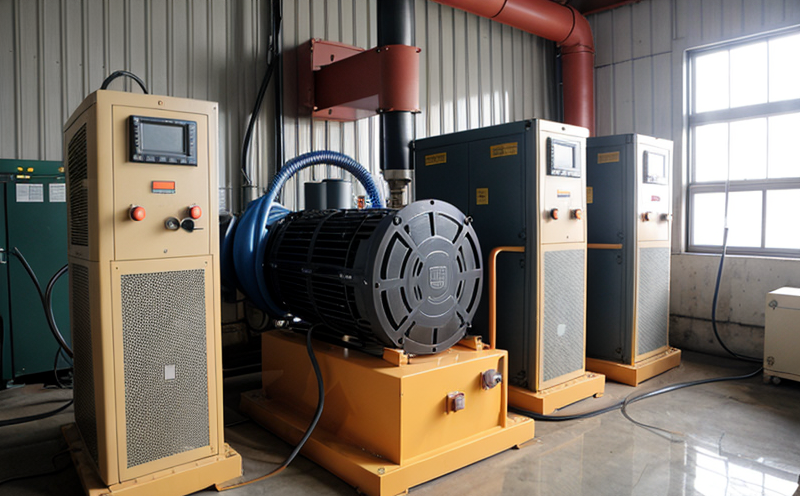ASME PTC 19 Instrumentation Testing for Power Plant Equipment
The ASME (American Society of Mechanical Engineers) Pressure Technology Committee (PTC) PTC 19 series of standards provides a framework for the design, manufacture, and testing of instrumentation used in power plant equipment. ASME PTC 19-1 is specifically focused on ensuring that all pressure measuring instruments used in these environments are accurate, reliable, and safe.
The importance of this standard cannot be overstated in the context of the global energy sector, particularly when it comes to power generation plants. These facilities operate under extreme conditions, involving high pressures, temperatures, and corrosive materials. Any failure in instrumentation can lead to catastrophic consequences, including equipment damage, safety hazards, and costly downtime.
The ASME PTC 19-1 standard covers a wide range of pressure measuring instruments such as bourdon tube gauges, bellows, diaphragm-type, strain gage, and capacitance type transmitters. It specifies the accuracy, repeatability, hysteresis, and other performance characteristics that these instruments must meet to ensure safe and reliable operation in power plant environments.
The testing procedures outlined in ASME PTC 19 are designed to verify that instrumentation complies with stringent quality control measures. This includes calibration checks under various operating conditions, verification of accuracy over the full range of expected measurements, and validation of safety features.
For compliance officers responsible for ensuring adherence to industry standards, ASME PTC 19 provides a robust framework for validating that all instrumentation used in power plants meets the highest levels of quality and reliability. This standard is particularly critical for organizations operating under stringent regulatory requirements such as those set by OSHA (Occupational Safety and Health Administration) or other national and international bodies.
Understanding the intricacies of ASME PTC 19-1 instrumentation testing can help quality managers, R&D engineers, and procurement officers make informed decisions about selecting the right instruments for their facilities. By adhering to these standards, organizations not only enhance operational efficiency but also contribute to the overall safety and sustainability of power generation operations.
Furthermore, ASME PTC 19 testing ensures that instrumentation is capable of withstanding harsh environmental conditions common in power plant settings. This includes resistance to temperature fluctuations, vibration, and exposure to corrosive substances like water vapor and acids. The standard also addresses the long-term stability of instruments, ensuring they remain accurate over extended periods.
Compliance with ASME PTC 19 is not merely a regulatory requirement but a strategic initiative for power generation facilities aiming to enhance operational reliability and safety. By investing in instrumentation that meets these rigorous standards, organizations can minimize risks associated with instrument failures, thereby protecting both personnel and equipment.
Why It Matters
The implementation of ASME PTC 19-1 instrumentation testing is crucial for several reasons:
- Enhanced Safety: Accurate and reliable pressure measurement instruments are essential for maintaining safe operating conditions in power plants.
- Operational Efficiency: Ensured accuracy of instrumentation leads to more efficient plant operations, reducing downtime and maintenance costs.
- Regulatory Compliance: Adherence to ASME PTC 19 ensures that all instruments meet strict regulatory requirements set by authorities like OSHA or national standards organizations.
- Sustained Performance: The long-term stability of instruments is guaranteed, ensuring consistent and accurate readings over extended periods.
In summary, ASME PTC 19-1 instrumentation testing plays a pivotal role in maintaining the integrity and reliability of power plant equipment. By prioritizing this standard, organizations can significantly enhance their operational efficiency and safety while meeting regulatory expectations.
Quality and Reliability Assurance
The ASME PTC 19-1 instrumentation testing process involves several key steps to ensure the quality and reliability of pressure measuring instruments used in power plants. These steps include:
- Calibration Checks: Instruments are calibrated under various operating conditions to verify their accuracy.
- Repeatability Tests: The consistency of readings is assessed by performing multiple tests on the same instrument.
- Hysteresis Testing: This ensures that instruments provide consistent readings when subjected to cyclic pressure changes.
- Accuracy Verification: Instruments are tested over their full range of expected measurements to confirm compliance with specified accuracy levels.
- Safety Feature Validation: The integrity and functionality of safety features, such as overpressure protection, are verified.
The quality control measures outlined in ASME PTC 19-1 ensure that all instruments used in power plants meet the highest standards of accuracy, reliability, and safety. This comprehensive testing process is critical for maintaining operational efficiency and ensuring compliance with regulatory requirements.
Customer Impact and Satisfaction
The implementation of ASME PTC 19-1 instrumentation testing has a direct impact on customer satisfaction in the power generation sector. By adhering to these stringent standards, organizations demonstrate their commitment to excellence and reliability. This, in turn, builds trust with stakeholders and enhances overall customer satisfaction.
Customers benefit from several key advantages:
- Enhanced Safety: Accurate instrumentation ensures that power plants operate within safe parameters, reducing the risk of accidents or equipment failures.
- Operational Efficiency: Reliable instruments lead to more efficient plant operations, minimizing downtime and maintenance costs.
- Regulatory Compliance: Adherence to ASME PTC 19 ensures that all instruments meet strict regulatory requirements, providing peace of mind for customers.
- Sustained Performance: The long-term stability of instruments guarantees consistent and accurate readings over extended periods, enhancing overall reliability.
In summary, the implementation of ASME PTC 19-1 instrumentation testing not only meets regulatory requirements but also significantly enhances operational efficiency and safety. This commitment to quality and reliability contributes directly to customer satisfaction in the power generation sector.





